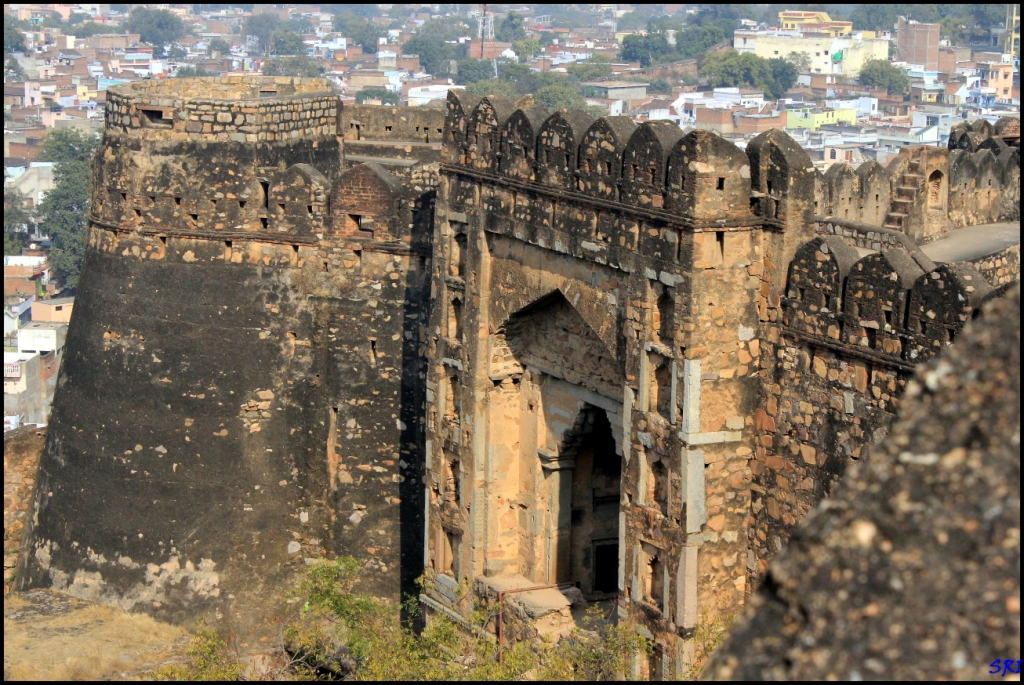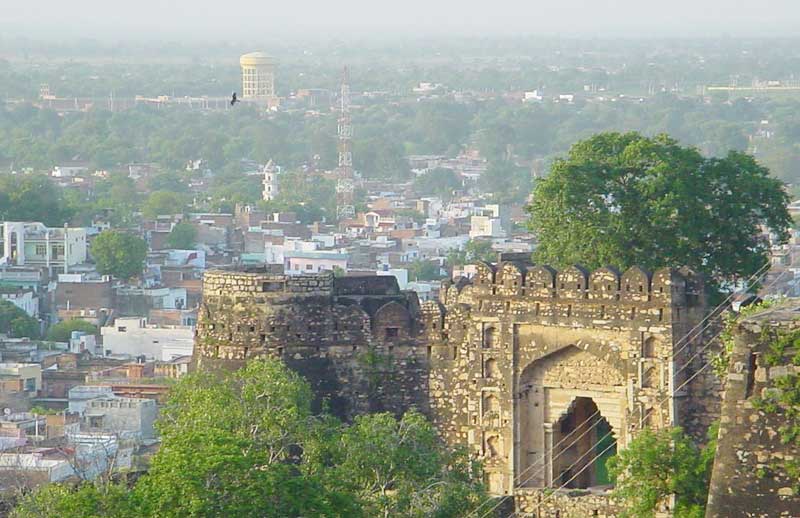Jhansi Fort - www.vishvabhraman.com
Jhansi Fort or Jhansi ka Kila is a fortress situated on a large hilltop called Bangira, in Uttar Pradesh, Northern India. It served as a stronghold of the Chandela Kingsin Balwant Nagar from the 11th through the 17th century.
The name Jhansi is said to derive from the word "jhainsi" meaning indistinct. According to legend: "Raja Bir Singh Deo of Orchha sat on the roof of his palace with his great friend the Raja of Jaitpur. He asked his friend whether he could see the distant fort on Bangara hill. The reply was that he could see it "jhainsi" (indistinctly).
In 1729, Mohammed Khan Bangash attacked Chattrasal. and helped Maharaja Chattrasal defeat the Mughal army. As a mark of gratitude, Maharaja Chattrasal offered a part of his state, which included Jhansi, to Mohammed Khan Bangash . In 1742 Naroshanker was made the subedar of Jhansi. During his tenure of 15 years he not only extended the strategically important Jhansi fort (the extension is called Shankergarh), but also constructed other buildings. In 1757, after Naroshanker was called back by the Peshwa. Madhav Govind Kakirde and then Babulal Kanahai were made the subedars of Jhansi. From 1766 to 1769 Vishwas Rao Laxman served as the subedar of Jhansi. Then Raghunath Rao (II) Newalkar was appointed the subedar of Jhansi. He was a very able administrator, increasing the revenue of the state and building both the MahaLakshmi Temple and the Raghunath Temple.
After the death of Shiv Rao his grandson Ramchandra Rao was made subedar of Jhansi. His poorly administered term ended with is death in 1835. His successor Raghunath Rao (III) died in 1838. The British rulers then accepted Gangadhar Rao as the Raja of Jhansi. The inefficient administration of Raghunath Rao (III) left Jhansi in a very poor financial position.
In 1861 the British Government gave the Jhansi fort and Jhansi city to Jiyaji Rao Scindia, the Maharaja of Gwalior, but the British took back Jhansi from Gwalior state in 1868.Jhansi was besieged by the company forces of General Hugh Rose in March and April 1858 and was captured on 4 April 1858. Rani Lakshmi Bai was able to make a daring escape on horseback from the fort and the city before the city was pillaged by Rose's troops.However, he was succeeded by Raja Gangadhar Rao, who was a very good administrator. He was reportedly very generous and sympathetic, and the local population of Jhansi was well satisfied. In 1842 Raja Gangadhar Rao married Manikarnika Tambe who was the given the new name of Lakshmi Bai. Lakshmi Bai ruled Jhansi after the death of her husband and used the fort as her residence. In 1858 she led Jhansi forces against those of the British East India Company.
========================================================================
Get a Cheapest Fare on Bus Booking, Hotel Booking, Flight Booking & Holiday Packages only on www.vishvabhraman.com and get up to 15% discount on all Bus bookings using Coupon Code “VBSP15”
For More Details Visit : www.vishvabhraman.com or Call Us On 07666 144 944
Labels: Jhansi Fort









0 Comments:
Post a Comment
Note: only a member of this blog may post a comment.
Subscribe to Post Comments [Atom]
<< Home